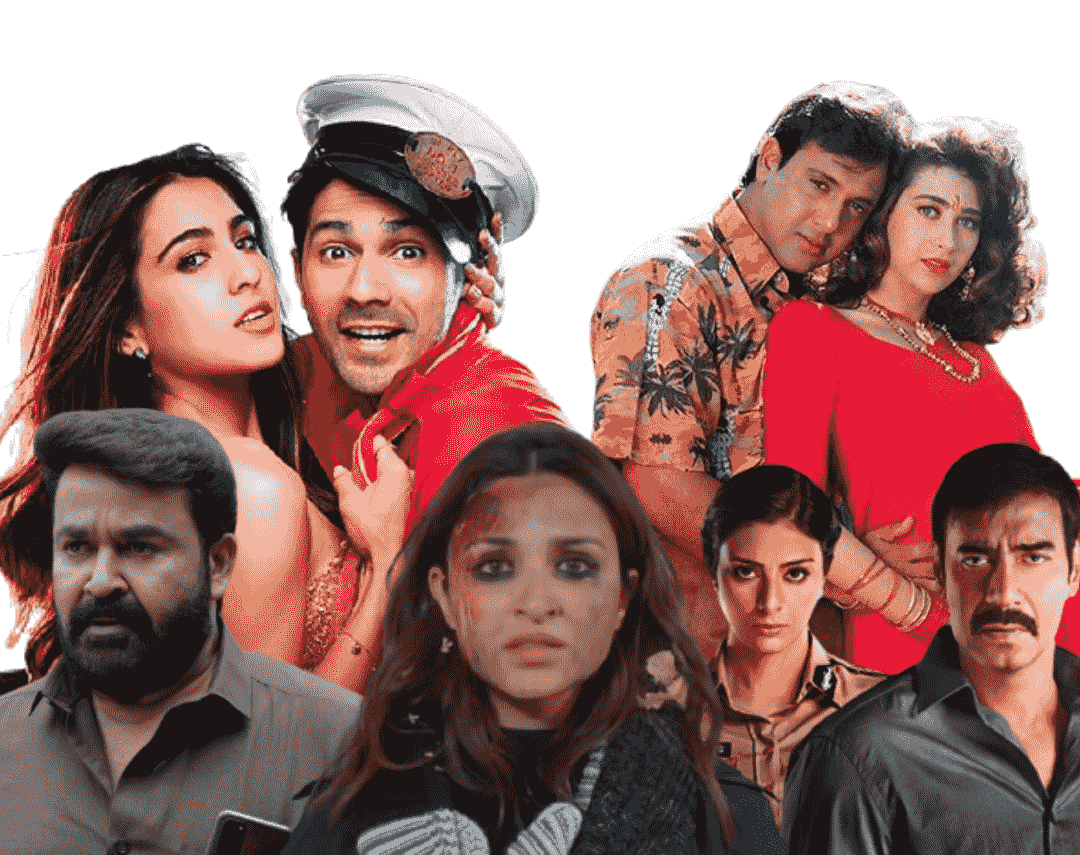“Inspirational” content and Bollywood go hand in hand most of the time. Not trying to be an intellectual snob but mainstream Bollywood movies have failed their audience a lot of times in the recent past. Excluding the unprecedented pandemic, the content quality of mainstream Bollywood movies is rant-worthy. From remakes after remakes, adaptations from either the South Indian movies or critically acclaimed foreign movies, or some best-seller prose piece, originality seems to have taken a backseat.
I definitely acknowledge the original scripts and I am sure everyone is grateful for the several OTT platforms that make those pieces available to us. However, it is high time we see original content on the silver screen.
Remakes and Adaptations
Commercial movies work on numbers and box office success, undoubtedly. However, as we play out the tunes of movie remakes of the 90s, we forget to strum the chord of context and political sensibilities. It saddens the masses when we see the regressive content of the 80s and 90s being copy-pasted in today’s scenario without filters.
Another crucial problem that particularly hovers the Bollywood industry is the innate compulsion of- Jesa desh, wesa bhes (When in Rome, do as the Romans). This is of course necessary but at what cost? In the forced attempt to make a piece relevant to the Indian audience, most often the beauty of the original piece gets lost. Yes, lost in translation! As much as anyone would like to access a foreign piece, it comes at the cost of lost context, missed out references, and most importantly, the altered feel in which it was expressed by the original creator. Translated pieces come with inherent flaws but forceful adding of Bollywood masala more often hinders the creative material.
The culture of nautanki has survived, evolved, and grown in India. Spanning over more than a century the art has seen multiple phases and continues to form an unparalleled legacy. But, at this point, does it truly deserve the centre stage that it claims to have built?
Movies in India are an escape for the masses from their normal lives. Does life imitate cinema or does cinema imitate life? This will always be a dicey discussion according to me.
Is Bollywood running out of ideas?
Bollywood’s history of remakes is now well-known. Let me take one for the team and ask the creators, weren’t Bollywood songs enough for a remake? The stories that worked a decade ago are taken up by individual creators, marketed as classics, and then go around to be remade without any time and generation-specific alterations. Can the Millenials and the post-truth era Gen Z accept such movies? Maybe as guilty pleasures but so much credibility is sacrificed through such a process. As much as classics like to be revisited, the humour or pun lines that were deemed to be funny then are now just remainders of crass humour and politically incorrect connotations. Whether it be the gold digger girlfriend joke or the intolerable and loosely used words for homosexuality, it needs a revamp.
Most of the dialogues and jokes that are taken from the previous generation set of movies indicate a very lackluster attitude on behalf of the creators and should absolutely be pointed out.
Another point of a remake for Bollywood movies comes from South Indian movies. It always causes a slight discomfort to see how Drishyam a lot of times is known as the Ajay Devgan and Tabu starrer movie instead of being known for its Malayalam originals starring Mohanlal and Meena. Due to a wider audience capacity of the Bollywood industry, the originals that are borrowed from the South Indian cinema often get overshadowed and overlooked.
Lost in adaptation
With globalisation and the changing world cinema, one thing that constantly crawls as a characteristic of Indian cinema is the “Indianisation” of pieces in whatever aspect we can think of. The most recent example and case study that is on top of my head would be “The Girl on the Train” starring Parineeti Chopra (adapted from Paula Hawkins’ novel by the same name). The actors derive a direct source of inspiration not only through the novel but also through the Hollywood adaptation of the novel.
Parineeti Chopra also mentioned how she sourced a lot of her direct inspiration from Emily Blunt from the Hollywood version. Directed by Ribhu Dasgupta, the psychological thriller also stars Aditi Rao Hydari, Avinash Tiwary, Kirti Kulhari, and others.
Stories like “Gone Girl” and “ The Girl on the Train” always push the nerve of the audience where they have an unpredictable relationship with the narrator. There is sympathy but with doubt in the minds of the audience for the narrator. However, the Bollywood adaptation takes a different view here. Dasgupta alters the piece and Meera (played by Parineeti Chopra) narrates the story in a very plain fashion which seems to fall flat in the heart pacing narrative otherwise. Ribhu Dasgupta in an interview mentions how this was necessary for the Indian audience but I guess, here is where the loss in adaptation happens.
It is annoying at times to rush back and forth for comparison of the several pieces but I think it is an inevitable factor that comes with remakes and adaptations. No spoilers but the climax have been altered by some degrees to suit the Bollywood favouring crowd. This is my take on the vast landscape of movie adaptations and remakes. If you feel otherwise please write to me. I would be happy to hear what you have to say.

